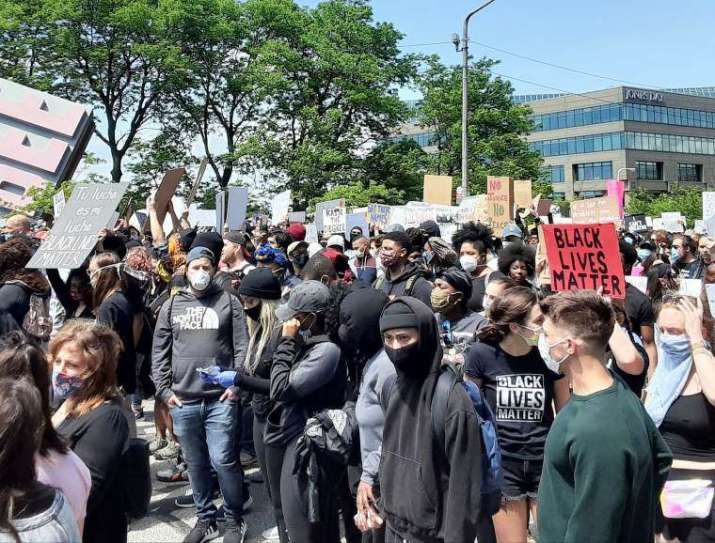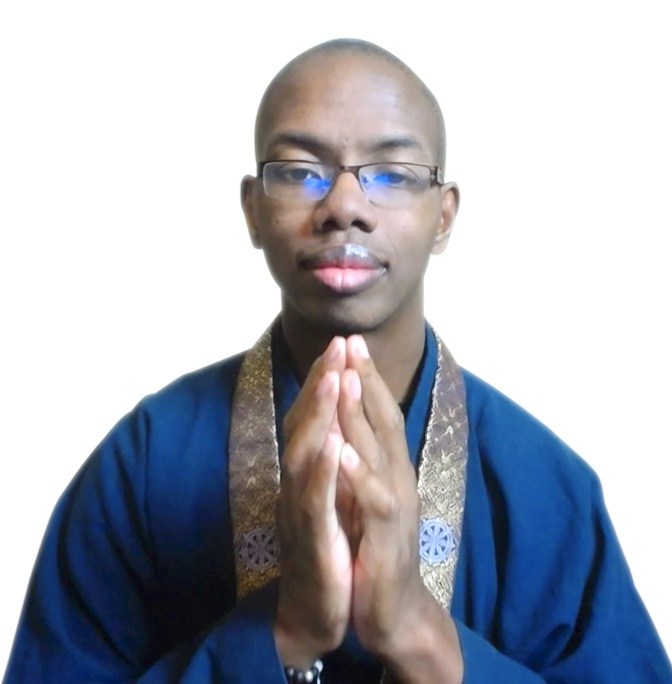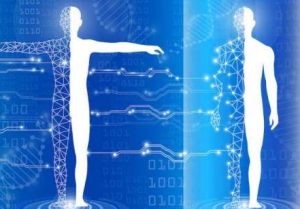
On Monday, 25 May, George Floyd died after a Minneapolis police officer pressed his knee on the back of Floyd’s neck for more than eight minutes. Floyd was handcuffed at the time, and was simultaneously being restrained by several other officers.
In the days after Floyd’s tragic death, protests have erupted in at least 17 US states, resulting in violence, mass arrests, property damage, and appeals for peace from local officials. In the wake of these events, many Buddhists are struggling with how they should respond.
The truth of the matter is that protests are not pretty. There is a lot of hurt and emotion at these events that spill out in strange, sometimes violent ways. People are tear-gassed or shoved by police and counter-protesters. Slogans are shouted that may not be in keeping with Right Speech. And there is a high risk of bodily harm that comes with participation.
However, the more I practice, the more I realize that protest is as much a part of Buddhist training as meditation. After all, how can I chant in praise of Kannon if I don’t use my body to bring her compassion into the world? How can I bow to the Buddha on my altar if I don’t protect the Buddha who is handcuffed in the street?
So, I’ve created a list of actions that Buddhists can take to support the fight for social justice, while still adhering to an ethos of compassion and nonviolence.
Verbal and emotional Support
Right Speech is an important tenet of the Noble Eightfold Path. One would be surprised how far a kind word can go. Simply telling someone, “Hello, thanks for being here,” can brighten their day tremendously. And if someone is injured, we can remind them to take slow, deep breaths (to slow their heart rate) while thanking them for their hard work. This helps them to remain calm while medics treat them.
Material support
Making offerings of food and medicine is a time-honored tradition in Buddhism. And one of the easiest ways to help during a protest is to provide material support to the medics and organizers on the ground. These people are generally grassroots citizens who are buying materials out of their own pockets, so supply shortages are common.
Find out where the drop-off points are for food and medical supplies, and spread the word with friends and family memebrs. Police will often block off streets surrounding an action, so be prepared to load a backpack and hike the last few blocks to make a donation.
One thing I did recently was to fill my own backpack with water and granola bars and hand them out directly to protesters. In the heat of the moment, people forget to tend to their own bodily needs, so making food and water easily available (i.e. just reach into my backpack and grab some) is important.
Bodily protection
Buddhism teaches that there is no separation between the relative and the absolute worlds. Thus, we must protect our bodily health in the same way that we protect our spiritual health.
The first step in providing bodily protection during a protest is to ensure that our own bodies are safe. It is important that we keep ourselves fed, hydrated, and get plenty of sleep the night before. There is a reason that loving-kindness meditation always starts with ourselves and then extends to other people.* If our own bodies are suffering, we will have a hard time protecting someone else’s body.
Next, it is important to know where medical triages have been set up. We can verbally tell people where they are, and if we’re physically able, we can carry people there or guide them. Often, people become disoriented after being tear-gassed or shot with rubber bullets or pepper balls, so we need to be their eyes and ears for a short time.
Finally, we can receive training in first aid and CPR to assist peoplewith injuries. Classes are often offered at local libraries and hospitals.
Bearing witness
This is a spiritual practice that was first made popular in the West by Zen teacher Bernie Glassman. It consists of looking toward the suffering of the world instead of turning away. When we do this we develop empathy for the people who suffer, along with opening ourselves up to find creative solutions to real-world problems.
As Buddhist protesters, the simplest way to bear witness is by showing up at a protest. In the same way that our presence in the meditation hall strengthens the practice of everyone there, our presence at a protest provides strength and encouragement to people fighting for social change.
We can also document everything that we see. There are often conflicting stories as to what takes place during a direct action (e.g. why did the police start using tear gas), and having video footage of the events can help to keep everyone honest.

Image courtesy of the author
Finally, we can act as legal observers.** This goes hand in hand with the previous point about taking video recordings of events. Record any arrests that take place and make the footage available to event organizers and anyone who is volunteering legal services. If someone is arrested, try to get their first and last names so that bail can be arranged.
Cleaning up
Unfortunately, property damage and littering can occur during protests. The day after an action, we can help ease tensions by cleaning up any debris around march routes and rally sites.
The United States is now in a period of extreme turmoil. It can be tempting to hide away in our temples and meditation centers, using teachings about the absolute to justify our inaction. However, if we look at the life of the Buddha, it becomes clear that he was an active participant in maintaining his community, acting as a peacekeeper, settling political disputes, and teaching the Dharma to anyone who cared to learn. As practitioners of the Way, it is incumbent on us to follow his example, and to work to save all sentient beings from suffering.
Namu Amida Butsu.
Sensei Alex Kakuyo is a Buddhist teacher and breathwork facilitator. A former marine, he served in both Iraq and Afghanistan before finding the Dharma through a series of happy accidents. Sensei Alex holds a B.A. in philosophy from Wabash College and his life’s work is helping students to bridge the gap between the finite and the infinite. Using movement, meditation, and gratitude practices, he helps them find inner peace in every moment. Sensei Alex is the author of Perfectly Ordinary: Buddhist Teachings for Everyday Life (independently published 2020). His book and other writings can be found on his website: The Same Old Zen.
* How to Save the World (The Same Old Zen)
** What is a Legal Observer? (Green and Black Cross)
See more
George Floyd protest live updates: Demonstrations continue in Minneapolis, NYC, LA, elsewhere (Yahoo News)
Buddhist Altars and the Oneness of All Things (The Same Old Zen)
Passing Through the Fence (The Same Old Zen)












